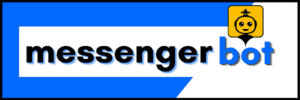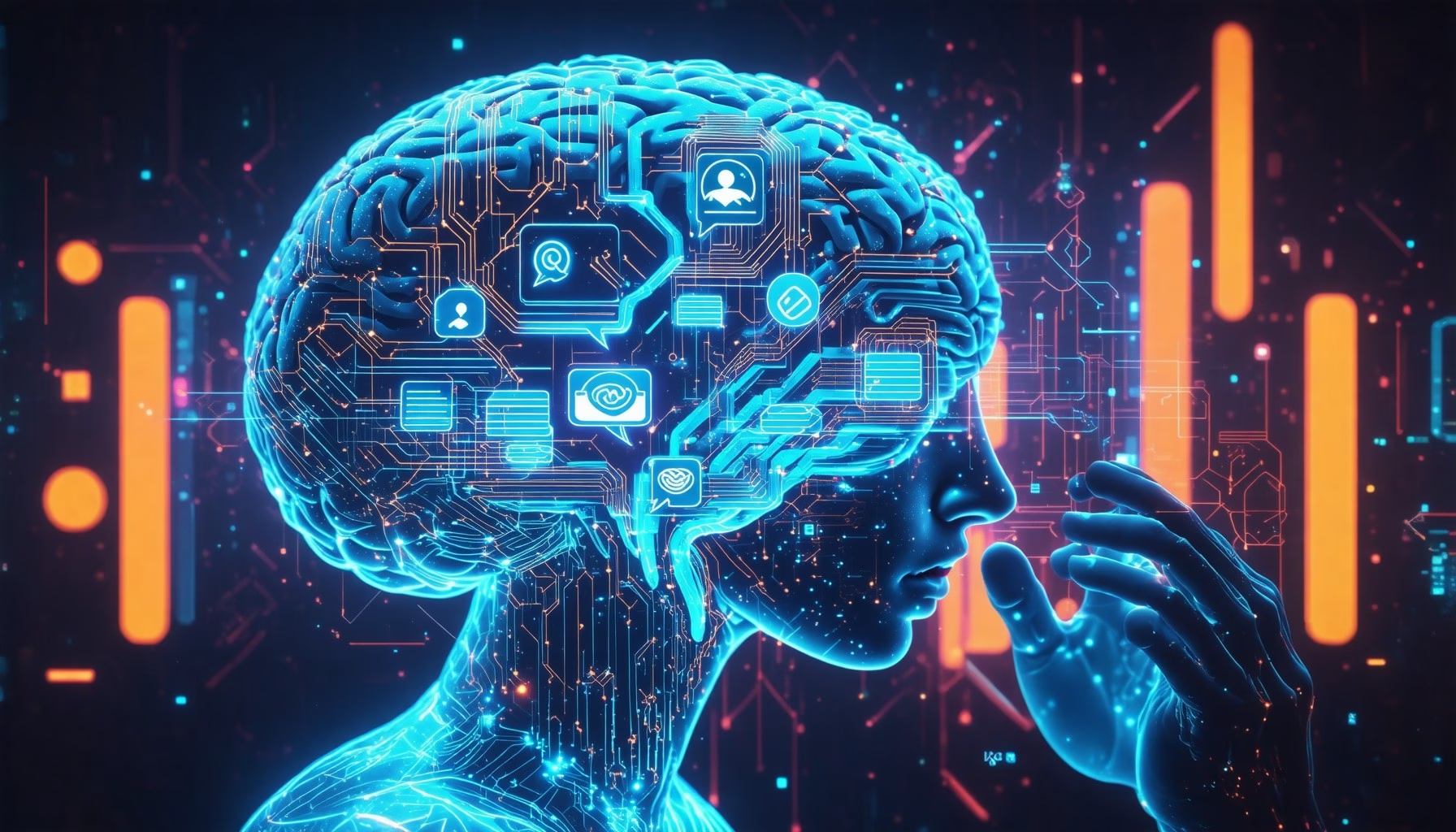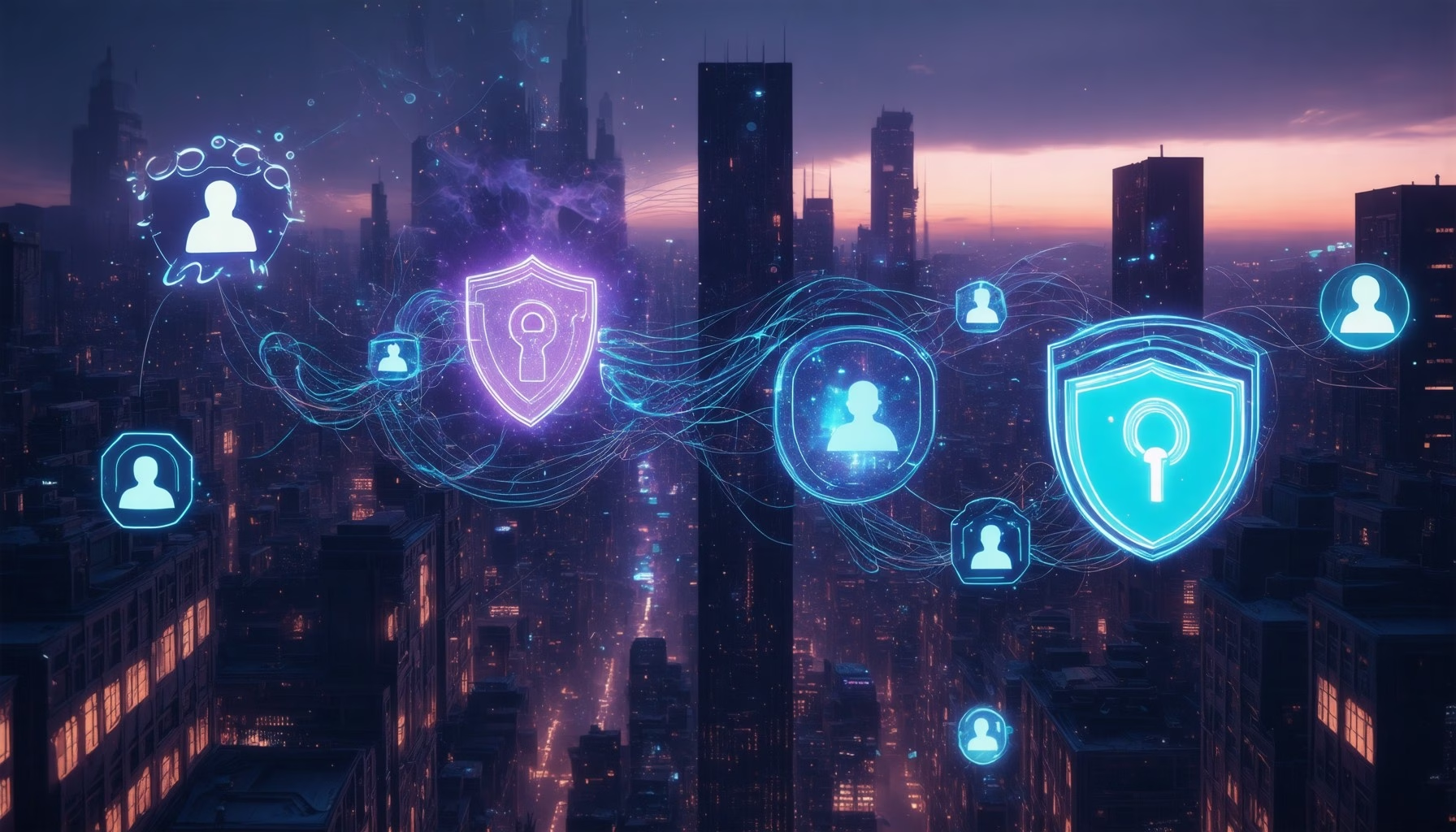Key Takeaways
- Understanding Bot Responses: Recognize the importance of bot responses in enhancing customer interactions and communication efficiency.
- Identification Techniques: Learn how to spot chat bot responses by analyzing language patterns, response timing, and engagement levels.
- Real-World Examples: Familiarize yourself with practical bot responses examples in customer service, e-commerce, and appointment scheduling.
- Crafting Effective Responses: Discover key characteristics of the best bot responses, including clarity, personalization, and contextual awareness.
- Utilizing Tools: Leverage bot response generators for comparison to improve your ability to identify and create engaging bot interactions.
In today’s digital landscape, understanding bot responses is more crucial than ever. As businesses increasingly rely on automated systems to enhance customer interactions, recognizing these chat bot responses can significantly improve communication efficiency. This article delves into the fascinating world of bot responses, starting with a clear definition and the importance of identifying them in various contexts. We will explore real-world examples of bot responses, particularly in customer service scenarios, and differentiate between chat bots and other types of bots. Additionally, we will provide practical techniques for spotting bot communication, including key indicators and tools for detection. By the end of this article, you will not only grasp what constitutes a bot response but also learn how to craft effective responses and recognize their role in platforms like Discord. Join us as we navigate through the intricacies of bot responses examples and equip yourself with the knowledge to enhance your digital interactions.
What is a bot response?
A bot response refers to the messages generated and sent by a chatbot during an interaction with a user. These responses can take various forms, including greetings, prompts, questions, or options for further engagement. The primary purpose of bot responses is to facilitate communication, guide users through processes, and provide information efficiently.
Definition of Bot Responses
Bot responses are crucial elements in the realm of digital communication, particularly in customer service and engagement. They serve as the interface between users and automated systems, ensuring that inquiries are addressed promptly and accurately. Here are some common types of bot responses:
- Welcome Messages: These are initial greetings that set the tone for the interaction, often including a brief introduction to the bot’s capabilities.
- Menu Options: Bots may present users with choices to streamline navigation, allowing them to select topics or actions relevant to their needs.
- Follow-Up Questions: After receiving input from the user, bots often ask clarifying questions to gather more information and provide tailored responses.
Importance of Recognizing Bot Responses
Understanding the significance of bot responses is essential for both users and businesses. Here are key reasons why recognizing these responses matters:
- User Engagement: Effective bot responses enhance user experience by making interactions more engaging and intuitive.
- Efficiency: Bots can handle multiple inquiries simultaneously, providing quick responses that improve overall service efficiency.
- Data Collection: Through interactions, bots can gather valuable data on user preferences and behaviors, which can be analyzed to improve services.
For example, a welcome message might say, “Hello! I’m here to assist you. How can I help you today?” A menu option could be, “Please choose from the following: 1) Product Information 2) Order Status 3) Customer Support.” A follow-up question might be, “Can you please provide your order number for assistance?”
In summary, bot responses are essential components of chatbot interactions, designed to enhance user experience and streamline communication. For further reading on the effectiveness of chatbots and their responses, refer to studies published by the Journal of Human-Computer Interaction and resources from the International Journal of Information Management.

What is an example of a bot response?
Real-World Bot Responses Examples
An example of a bot response can be illustrated through a common customer service interaction. For instance, if a user asks, “Do you have my phone number on file?” a well-structured bot response could be:
“Yes, I can assist you with that. Please hold on while I retrieve your information.”
This response is clear, concise, and maintains a professional tone, which is essential for effective communication. Incorporating advanced functionalities, such as those found in Messenger Bots, can enhance user experience. These bots can utilize natural language processing to understand context better and provide more personalized responses. For example, a Messenger Bot might respond with:
“Yes, I have your phone number on file. Would you like me to send you a confirmation message?”
This not only answers the user’s question but also offers additional assistance, showcasing the bot’s capability to engage further. For more insights on bot responses and their effectiveness, refer to studies from sources like the Journal of Artificial Intelligence Research and industry reports from platforms like Gartner, which emphasize the importance of conversational AI in improving customer interactions.
Common Scenarios Featuring Bot Responses
In various industries, bot responses play a crucial role in streamlining communication. For example, in e-commerce, a bot might respond to inquiries about order status with:
“Your order is currently being processed and will be shipped within 2-3 business days.”
This type of response not only provides the necessary information but also reassures the customer about their purchase. Similarly, in the hospitality sector, a bot could assist with booking inquiries by saying:
“I can help you with that! Please provide your desired check-in and check-out dates.”
These examples demonstrate how effective bot responses can enhance user satisfaction and engagement. By leveraging platforms like Messenger Bot, businesses can create tailored interactions that resonate with their audience, ultimately improving customer loyalty. For more on crafting effective bot responses, check out our guide on Chatbot Welcome Message Examples.
What is an example of a bot response?
Bot responses are automated replies generated by software applications designed to simulate human conversation. These responses can vary widely depending on the context and purpose of the bot. Understanding real-world examples of bot responses can help users recognize their utility and effectiveness in various scenarios.
Common Scenarios Featuring Bot Responses
Bot responses are prevalent in numerous settings, particularly in customer service and online interactions. Here are some common scenarios where you might encounter bot responses:
- Customer Support: Many businesses utilize chatbots to handle frequently asked questions. For instance, a user might ask, “What are your store hours?” and receive an immediate response like, “Our store is open from 9 AM to 9 PM, Monday through Saturday.”
- Order Tracking: When a customer inquires about their order status, a bot might respond with, “Your order is currently being processed and will ship within 2-3 business days.”
- Appointment Scheduling: Bots can assist in scheduling appointments. A user could say, “I want to book a haircut,” and the bot might reply, “Please select a date and time for your appointment.”
These examples illustrate how bot responses can enhance user experience by providing quick and accurate information, thereby streamlining communication.
Analyzing Bot Responses Examples in Customer Service
In customer service, bot responses play a crucial role in managing user interactions efficiently. Here are a few notable examples:
- FAQ Bots: A bot might respond to a question like, “What is your return policy?” with a detailed answer: “You can return items within 30 days of purchase for a full refund. Please ensure the items are in their original condition.”
- Feedback Collection: After a service interaction, a bot might ask, “How satisfied are you with our service today?” This response can help businesses gather valuable feedback.
- Product Recommendations: If a user asks, “Can you suggest a good laptop?” the bot could respond with, “Based on your preferences, I recommend the XYZ model, which offers great performance and battery life.”
These bot responses not only provide immediate assistance but also contribute to a more personalized customer experience, showcasing the effectiveness of chat bot responses in enhancing service delivery.
How to Identify Bot Responses?
Identifying bot responses is crucial for ensuring meaningful interactions in digital communication. By recognizing the characteristics of bot-generated messages, you can enhance your engagement strategies and improve user experience. Here are some effective techniques for spotting bot responses:
Analyzing Language Patterns in Bot Responses
One of the most effective ways to identify bot responses is by analyzing the language patterns used. Here are key indicators to look for:
- Repetitive Patterns: Bots often utilize repetitive phrases or structures. If the messages you receive seem formulaic, overly uniform, or consist of the same responses to different questions, they may be generated by a bot. For example, if you notice the same greeting or closing in multiple messages, this is a strong sign.
- Lack of Depth: Bot-generated texts typically lack nuanced understanding or depth. If the responses are overly simplistic, fail to address complex ideas, or do not provide personalized information, they could be from a bot. Genuine human interaction usually involves more context and tailored responses.
- Delayed Responses: While not always a definitive sign, bots may respond instantly or with minimal delay, especially if they are programmed to handle multiple inquiries simultaneously. Human responses often have varied timing based on the individual’s availability.
Utilizing Bot Response Generators for Comparison
Another effective technique for identifying bot responses is to utilize bot response generators. These tools can help you create sample responses that mimic bot interactions. By comparing the generated responses with the messages you receive, you can identify discrepancies that may indicate bot involvement. Here are some benefits of using these tools:
- Consistency Check: By generating responses with a bot response generator, you can evaluate the consistency of tone and language. If the responses you receive differ significantly from the generated samples, it may suggest a bot is at play.
- Contextual Awareness: Bots often struggle with maintaining contextual awareness. By analyzing how well the generated responses align with your conversation, you can gauge whether the responses you receive are human or bot-generated.
- Keyword Analysis: Bots may rely heavily on specific keywords or phrases to generate responses. If you notice that the text frequently repeats certain keywords without adding meaningful context, it may be a bot.
For more insights on crafting effective bot responses, check out our guide on how to make a Facebook Messenger bot.

How to Identify Bot Responses?
Identifying bot responses is crucial for ensuring effective communication and understanding the nature of interactions. With the rise of automated messaging systems, recognizing when you’re engaging with a bot can enhance user experience and streamline conversations. Here are some techniques to help you spot bot responses.
Analyzing Language Patterns in Bot Responses
One of the most effective ways to identify bot responses is by analyzing the language patterns used. Bots often exhibit specific characteristics in their communication style:
- Repetitive Phrasing: Bots tend to use the same phrases or sentences frequently, lacking the variability typical of human conversation.
- Formal Language: Many bots maintain a formal tone, avoiding colloquialisms or slang that humans might use.
- Delayed Responses: While bots can respond quickly, they may also have programmed delays that can indicate automation.
- Generic Answers: Bot responses often lack personalization and may provide generic answers that do not address specific user queries.
By paying attention to these language patterns, users can better discern whether they are interacting with a bot or a human.
Utilizing Bot Response Generators for Comparison
Another effective method for identifying bot responses is to utilize bot response generators. These tools can simulate bot interactions, allowing users to compare actual responses with generated ones. Here’s how you can use them:
- Test Interactions: Engage with a bot response generator to see how it replies to various prompts. This can help you recognize similar patterns in real bot interactions.
- Analyze Response Quality: Compare the quality and relevance of responses from the generator with those received from a suspected bot. This can highlight discrepancies that indicate automation.
- Identify Common Responses: Many bots share common templates for responses. By familiarizing yourself with these templates, you can more easily spot them in real conversations.
By employing these techniques, you can effectively identify bot responses, enhancing your overall communication experience. For more insights on crafting effective bot responses, check out our guide on how to make a Facebook Messenger Bot.
How to Identify Bot Responses?
Identifying bot responses can be crucial in various contexts, such as online surveys, customer service interactions, and social media engagements. Here are key indicators and methods to effectively distinguish between human and bot responses:
- Content Structure and Patterns: Bots often generate responses that follow predictable patterns or structures. Look for repetitive phrases, overly formal language, or a lack of personalization. Human responses typically exhibit more variability in tone and style.
- Inconsistencies in Responses: Analyze the coherence and relevance of the answers. Bots may provide responses that are factually correct but lack contextual understanding. If a response seems out of place or does not directly address the question, it may be a bot.
- Response Timing: Bots can respond almost instantaneously, while human responses may take longer due to the need for thought and reflection. If a response is received too quickly, it could indicate a bot.
- Engagement Level: Evaluate the depth of engagement. Bots often fail to ask follow-up questions or provide nuanced answers. A lack of engagement in a conversation can be a telltale sign of a bot.
- Verification of Quantitative Responses: In surveys or data collection, bots may provide responses that are statistically improbable or overly uniform. Cross-checking these responses against expected distributions can help identify bot-generated data.
- Use of Advanced Detection Tools: Employ tools and algorithms designed to detect bot activity. These can analyze patterns in text, timing, and user behavior to flag potential bot responses.
- Human-like Interaction: Bots often struggle with complex queries or emotional nuances. If a response lacks empathy or fails to address emotional undertones, it may be generated by a bot.
For further reading on this topic, refer to the British Psychological Society’s insights on human-bot interaction dynamics, which provide a deeper understanding of how to discern between human and automated responses.
Utilizing Bot Response Generators for Comparison
Another effective method for identifying bot responses is to utilize bot response generators. These tools can help you create sample responses that mimic both human and bot interactions. By comparing actual responses to those generated by these tools, you can better understand the nuances that differentiate human communication from automated replies.
Some popular bot response generators include:
- Brain Pod AI’s Chat Assistant – This tool allows you to generate realistic chat responses that can be used for testing and comparison.
- AI Writer – Use this to create varied text responses that can help identify patterns in bot communication.
- Help Center for Brain Pod AI – Access resources and guides on how to effectively use AI tools for generating and analyzing responses.
By leveraging these techniques and tools, you can enhance your ability to identify bot responses, ensuring more authentic and engaging interactions in your digital communications.
Best Bot Responses
Characteristics of the Best Bot Responses
To create effective bot responses, several key characteristics must be considered. The best bot responses are:
1. **Concise and Clear**: Users appreciate straightforward answers. A well-crafted response should directly address the user’s query without unnecessary jargon or complexity.
2. **Contextual Awareness**: The ability to understand the context of a conversation is crucial. A bot that can recognize previous interactions or user preferences can provide more relevant responses.
3. **Personalization**: Tailoring responses to individual users enhances engagement. Utilizing data such as user names or past interactions can make the conversation feel more human-like.
4. **Empathy and Tone**: A friendly and approachable tone can significantly improve user experience. Bots that incorporate a touch of humor or empathy can create a more enjoyable interaction.
5. **Promptness**: Speed is essential in digital communication. The best bot responses are delivered in real-time, ensuring users feel acknowledged and valued.
6. **Error Handling**: Effective bots should gracefully handle misunderstandings or errors. Providing alternative suggestions or asking clarifying questions can help maintain the flow of conversation.
By focusing on these characteristics, businesses can enhance their customer interactions and improve overall satisfaction with their bot responses.
Funny Bot Responses: Adding Humor to Interactions
Incorporating humor into bot responses can be a powerful tool for engagement. Here are some examples of funny bot responses that can lighten the mood:
1. **Playful Acknowledgment**: “I see you’re typing… or are you just trying to confuse me? Either way, I’m here for it!”
2. **Witty Replies**: “I may not have a heart, but I promise my responses are full of love… or at least a lot of code!”
3. **Light Sarcasm**: “Sure, I can help with that! Just let me consult my crystal ball… oh wait, it’s in the shop!”
4. **Punny Responses**: “Why did the bot cross the road? To optimize the other side’s engagement!”
Using humor not only makes interactions more enjoyable but also helps in creating memorable experiences for users. This approach can lead to increased user retention and satisfaction, making your bot a favorite among customers. For more insights on crafting engaging bot responses, check out our guide on [Chatbot Welcome Message Examples](https://messengerbot.app/crafting-the-perfect-chatbot-welcome-message-examples-and-tips-for-engaging-conversations/).





